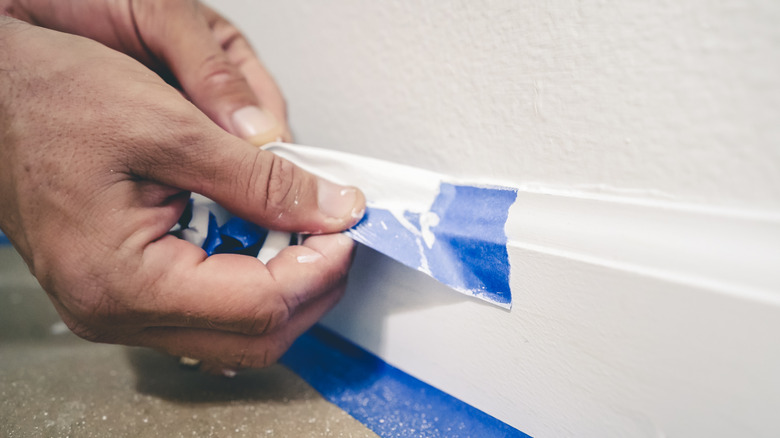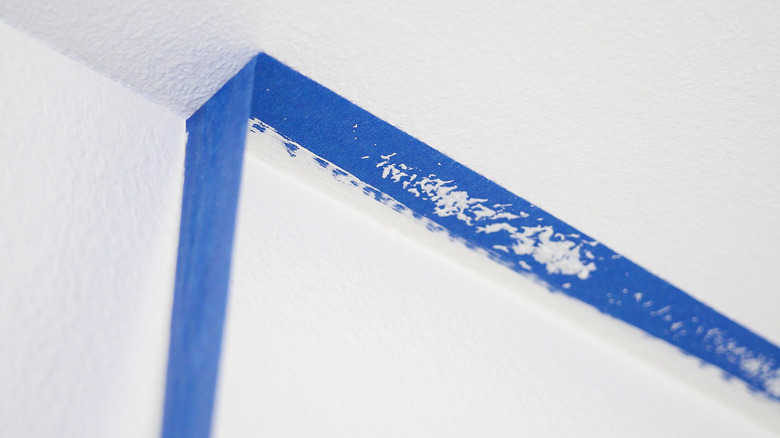The One Mistake That Almost Everyone Makes With Painter's Tape
Painter's tape is absolutely necessary for any paint job, as it keeps pigment off of any surfaces you want to avoid, like moldings, the floor, and the ceiling, per Franklin Painting. It also creates straight lines, helping you avoid an uneven result. You should never use any other type of strip when covering your walls in new tint; painter's tape is specifically made to adhere to surfaces without creating any marks or stripping away the pigment. Additionally, you need to ensure your placement is flawless; if you don't take your time applying it, you may find some errors in the end.
While applying the painter's tape correctly is important, so is taking it off. Unfortunately, many homeowners make the same mistake during this part of the painting process (and it's not as obvious as you might think). It's small, but it greatly affects the end result. So, let's take a look at the one mistake almost everyone makes with painter's tape.
Being too patient
Many homeowners have an issue with being too patient in removing the painter's tape after the job is finished. Once the last coat is done, there's no need to rush to take the strip off, right? As a matter of fact, there is. PPM says waiting too long to remove it can actually ruin the paint. It actually chips away the color, destroying all your hard work. The ideal amount of waiting time is from one to six or eight hours; however, if your paint isn't dry by then, feel free to leave it on a bit longer.
Taking the painter's tape off while the pigment is still wet can cause the tint to drip where you didn't want any. To remove the strip without interrupting the paint, Scotch recommends using a razor blade or putty knife to run along the tape's edge. You lessen the chance of the pigment dripping or chipping this way. As you pull it away with your hand, be sure to hold the strip at a 45-degree angle. Should the adhesive stick to the surface, try pulling the painter's tape at a 90-degree angle instead.

